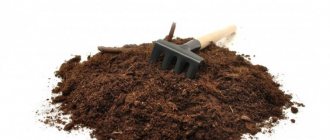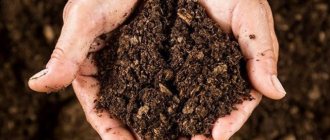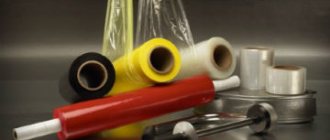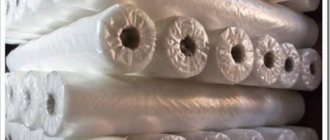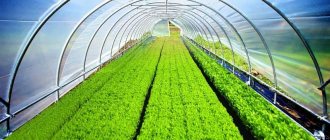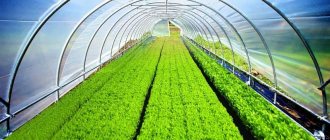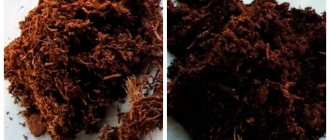Peat is one of the types of minerals. It is formed as a result of the decomposition of plants at high humidity, under the influence of biochemical processes. In appearance it resembles earth, so different soils are often sold under its appearance. That’s why it’s so important to be able to identify peat by its external characteristics.
This article will be useful to those who:
- Wants to understand whether there is peat on his site
- He is going to buy peat and does not want to make a mistake in choosing
We will focus on the appearance of the peat. If you want to check the material for botanical, mineral or organic composition, acidity and other properties, you need to contact a laboratory. It is almost impossible to do this with hand-held materials in the field. After all, peat does not have any distinctive features (like, for example, black soil).
So, in appearance, peat can be identified by:
- Structure
- Blossom
Let's study each point in more detail.
Types of peat
This useful fossil fuel comes in two types. If the peat was extracted in the upper layers of the swamp, then it is high-moor peat, and if in the lower layers of the reservoir, it is low-lying peat. Types of peat vary in appearance and properties.
High peat
Consists of the remains of marsh plants, such as reeds, wild rosemary and others. The degree of decomposition of such peat is weak and there are few nutrients in it. However, it can also be useful. High-moor peat is used as a fertilizer to increase soil fertility, as well as to insulate barns and cowsheds to prevent livestock from freezing. Weakly decomposed peat has a light brown color.
Lowland peat
Its degree of decomposition is much higher than that of lowland peat; therefore, peat of this type is more saturated with nutrients. It is formed from the remains of horsetails, mosses and sedges. This type of peat, like lowland peat, is used in agriculture to fertilize soils. The color of lowland peat can vary from dark brown to black.
Conclusion
Slab foundation on peat soil
We learned what peat and peat soil are, how interesting and enriched it is with various components, useful elements and substances. How it is useful for various industrial and agricultural fields.
And most importantly, for ordinary people, how well peat soil can help in growing a large harvest of vegetables and herbs, as well as for stunning multi-colored flower beds, flower beds and home flowers and plants.
Where else is peat used?
Absolutely all types of peat absorb liquid well (one hundred grams of peat can hold up to one liter of water). Due to this property, peat is used to purify water from oil contamination. In addition, both lowland and high-moor peat are used to increase soil fertility, both in the open air (in vegetable gardens or gardens), and for flowers or vegetable seedlings that will grow under a roof, for example, on a windowsill.
In addition, peat is part of many well-known medicines, for example, activated carbon. Peat mud also has a beneficial effect on human health. Therefore, very often you can see sanatoriums, resort areas and recreation centers not far from peat deposits.
Peat burns very well and produces a lot of heat. Peat briquettes can be used for space heating. Peat is an excellent sound insulator, which is why peat blocks are often used in the construction of houses.
The range of uses of peat in agriculture is very wide. For example, this mineral is added to feed yeast to increase its nutritional properties.
Peat deposits in Russia
There are almost 50 thousand deposits throughout Russia. A large number are located in the Asian part of the country. The largest place of peat formation is Vasyugan.
These are several of the largest swamps, the area of which is approximately 55 thousand square meters. km. They cover the Tomsk, Omsk and Novosibirsk regions.
How is peat extracted?
Photo: Rude Health / Peat Cutting Near Challister Ness / CC BY-SA 2.0
According to scientists, peat is a very common resource; deposits of this mineral occupy 3% of the area of our planet. Modern technology makes it possible to dig hundreds of meters deep. This allows for more careful use of each deposit. High-moor peat is located on the surface, but the low-lying layers of this fossil can be located at a depth of twenty meters. Accordingly, in order to extract peat, you need to dig. And dig deep enough. But before you start digging, you need to prepare the deposit. Determine the boundaries of the peat extraction site, clear the area so that nothing interferes with the excavations. For these purposes, special measuring instruments and excavators are used.
The benefits of peat and the rationality of its use
What is important to know when using peat on a site?
- Peat itself does not nourish plants, but it helps them better absorb other fertilizers.
- The soil to which peat has been added becomes more structural, i.e. consisting of lumps and pores, like a sponge. Such soil retains moisture, air and nutrients well.
- It makes sense to use peat only on poor, infertile or depleted soils.
- Peat is considered a natural antiseptic and inhibits the development of harmful fungi and bacteria.
- Peat (high peat) can regulate the acidity of the soil, adjusting it to the needs of plants.
And one more interesting point. Not long ago, a liquid preparation based on peat extract was developed, put into production and sold. At the same time, peat is subjected to special treatment, enriching it with nitrogen and preserving all its inherent microelements and beneficial substances. True, in this case peat loses its main quality - improving the soil structure. So, decide for yourself.
Comparison
You can understand the value of this mineral by comparing it with organic fertilizers:
- humus and manure;
- black soil;
- chicken droppings.
Humus and manure
The main difference is acidity. Peat wins here, so it is used for depleted land. But in most cases, they resort to humus, since it contains more nutrients necessary for plant growth.
Chernozem
Chernozem contains a large amount of humus, but it also contains more pathogenic bacteria and viruses. For this reason, the summer resident must choose on his own, taking into account what exactly the soil lacks. When choosing peat, it should be mixed with sand, perlite and humus.
Chemical composition of sediments
In terms of chemical composition, peat deposits contain about 70% water. Which plants have undergone decomposition can be determined by the living vegetation living in the area.
Minerals – calcium, silicon in the form of oxides, aluminum, iron, magnesium. There is also zinc, copper, cobalt and molybdenum. There is more nitrogen in the lowland layer - up to 4%, in the upper layer - up to 2.5%. The disadvantage of peat is that it contains little potassium, which is the main macronutrient responsible for fruiting.
Video: What is peat for?
Humic acids in the upper layer are about 10%, in the low layer – up to 50%. The more decomposed plant residues are, the richer the substance is in humates. Cellulose is present - about 2%. There are soluble and slightly soluble substances in each fraction, but their quantity varies depending on the degree of decomposition of the residues.
Before extraction, peat deposits are analyzed for all chemical components in order to have an idea of what can be made from peat, what its microelement composition is and how to prepare it for sale.
How is it formed and mined?
Plants and aquatic organisms that live in swamps, lakes and reservoirs with low-flow water die and form biomass, which is partially processed by bacteria under conditions of high humidity and lack of oxygen. What is obtained is deposited in layers and pressed.
Expert opinion
Zarechny Maxim Valerievich
Agronomist with 12 years of experience. Our best country expert.
Ask a Question
The fossil is mined in swamps; more than 80% of the world's reserves are concentrated in the zone of its maximum accumulation. The extraction method is open, since the material is located on the surface or shallow underground. The peat is cut by machines, the crumbs are collected and pressed or cut into plates, dried and transported for further processing.
Physical properties of peat - influence on the soil
Physical properties include:
- Structure. Upland sediments have a spongy structure, while lowland sediments have an earthy-lumpy, viscous or layered structure.
- Density. This indicator depends on the degree of humidity and botanical composition. The ratio of the mineral and organic parts plays a role.
- Moisture capacity is the amount of water in a certain volume of a substance. In high-moor peat it is maximum.
- Combustion temperature. This indicator increases in proportion to the degree of decomposition.
- Porosity is the ability to retain moisture. The indicator is high for both types.
The greatest positive effect when using peat on a summer cottage is achieved on sandy or clay soils. When applied to light soil, the substance takes a long time to decompose, but retains moisture. Thanks to this, you can water crops less often.
Clay becomes looser when mixed with peat. The combination of clay and peat is one of the most successful, since a large amount of potassium in loams compensates for its absence in peat deposits.
The use of peat in the garden allows you to get a cheaper harvest, without ruining the soil with mineral fertilizers. Therefore, to the question of what is better - peat or manure for the garden, we can answer: in financial terms, peat is definitely more profitable.
In terms of the ratio of nutrients, it is almost identical to manure, but is more prepared for application to the soil. The fact is that to prepare animal organic matter, it takes time for excess ammonia and methane to disappear. In the case of peat, this happens faster - you just need to dry it.
Fertilization of individual crops
The mineral is used differently for some crops; it is important to know how to fertilize correctly so as not to harm either the plant or the soil.
Potato
Growing potatoes is a labor-intensive process. To reap a rich harvest, a summer resident makes fertile soil in the garden bed by adding sand and clay. But by themselves, these components do not perform the necessary function, so peat is added to them. This soil composition is the most suitable for the crop.
To achieve the best effect, it is recommended to mix peat compost with mineral fertilizers, and the soil should be loose and slightly acidic.
If the soil is light, then peat fertilizer should be applied directly into the holes in the spring. If the soil is heavy, it is better to fertilize it with peat in the fall at the same time as applying manure.
Strawberry
Applying fertilizer to strawberry beds, gardeners note the early ripening of the berries, the harvest becomes richer, and the taste of the strawberries is richer. Apply in the spring (a layer of peat 5 cm thick is added to the hole) or in the fall (peat compost is scattered between strawberry beds (25 kg per 1 m2), and then dug up), mixing with sawdust and drying well. Add it to the row spacing 30 kg per 1 m2. Or directly into each hole.
Peat can be used as mulch for garden beds. To do this, it must first be ventilated, mixed with ash and sawdust (for 10 kg of peat - 1 kg of ash). This is necessary to reduce the acidity level of the peat and not harm the soil.
Tomatoes
For this crop, peat is used as foliar and root feeding every 14 days. Or apply 4 kg per 1 m2, scattering it evenly over the bed.
For better effect, fertilizer is added when planting seeds.
cucumbers
Thanks to the addition of peat to the soil, a rich crop harvest is obtained. It is important to observe the dosage and correctly produce or reduce the acidity of the soil. Maintaining the proportions will help you get the maximum possible yield from cucumber bushes.
Cabbage
For this crop, which is very picky about acidity, peat is used to lower the acidity level. Then the effect of its use will become noticeable almost immediately.
What garden plants love peat fertilizers?
Cranberries, lingonberries, and strawberries initially grow well on peat soils. For these crops, high acidity levels are not a problem. Some types of violets, heather plants and rhododendrons prefer acidic soil.
If you mix the substance with ash or other deoxidizers, you can use this mixture to prepare a bed for tomatoes and potatoes. Peat contains components that destroy pathogenic bacteria and fungi, so it is used in greenhouses, and the next year the soil is completely replaced. It costs less, and vegetables can be considered environmentally friendly because no chemicals are used to combat plant infections.
Did you like the article? Share with your friends:
Hello, dear readers! I am the creator of the Fertilizers.NET project. I am glad to see each of you on its pages. I hope the information from the article was useful. Always open to communication - comments, suggestions, what else you want to see on the site, and even criticism, you can write to me on VKontakte, Instagram or Facebook (round icons below). Peace and happiness to everyone!
